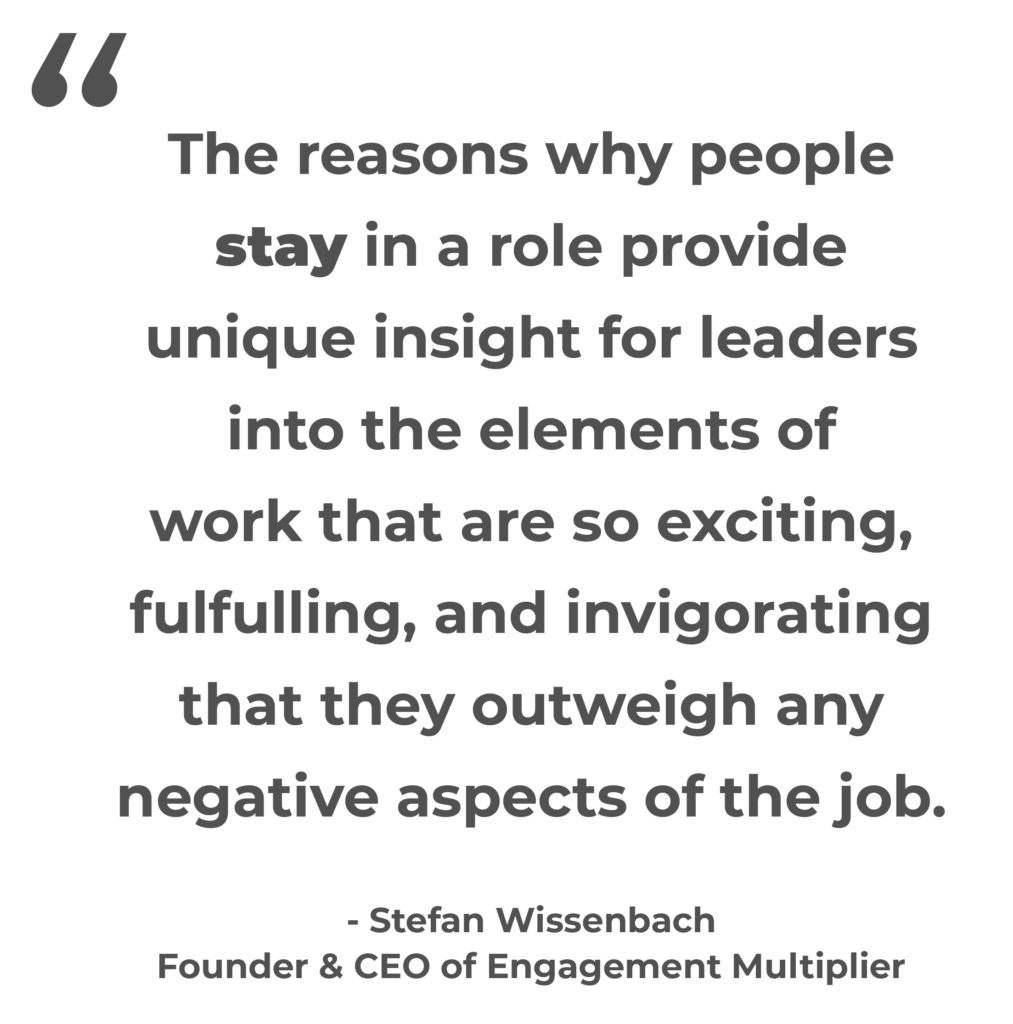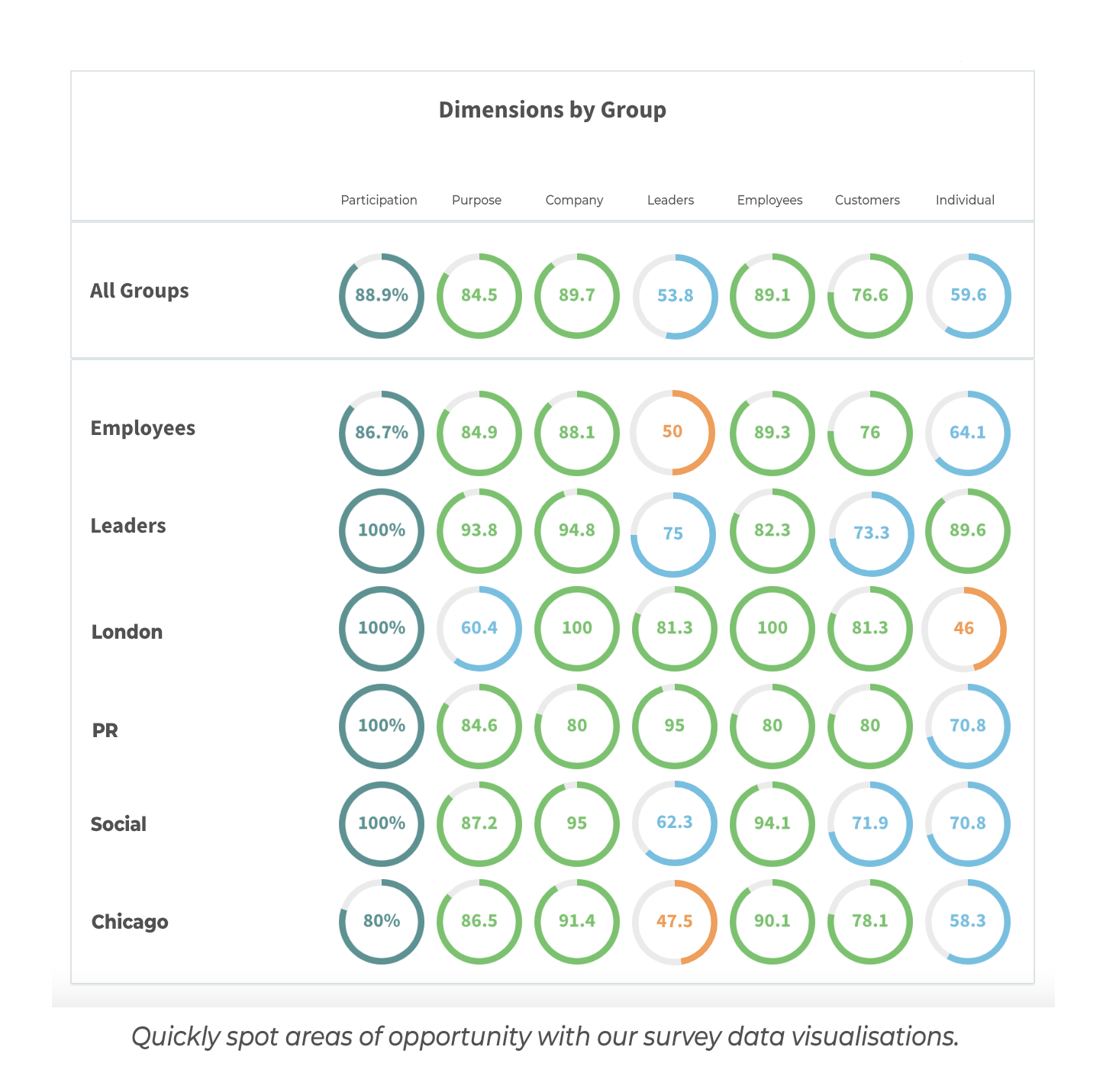New analyses from Deutsche Bank says that British workers are resigning from their jobs at the highest rate seen since 2009, while at the same time, the number of open vacancies has also reached the largest level on record, bearing out earlier findings that a stunning 76.4% of professionals in the UK are planning to look for a new job in 2022.
According to the ONS, the number of job vacancies in the fourth quarter (October to December 2021) “rose to a new record of 1,247,000, an increase of 462,000 from the pre-coronavirus January to March 2020 level, with most industries displaying record numbers of vacancies.”
The challenges this situation presents to employers are well documented, so we’re going to focus on actions you can take to can get ahead of employee resignations and retain your employees.
Instead of operating from the mindset of “preventing employee attrition,” we’re focusing upon creating the conditions that encourage people to stay, rather than taking measures to prevent them from leaving. Put another way, it’s the difference between furnishing a room to make it an inviting place people are reluctant to leave, as opposed to locking the door so they can’t escape.
“The reasons why people stay in a role are those they find so exciting, fulfilling, and invigorating that they outweigh any negative aspects of the job,” notes our founder and CEO, Stefan Wissenbach. “A workplace in which people feel challenged and fulfilled will have dramatically better employee retention.”
Why employees stay in jobs
In a discussion of the book, Love ‘Em or Lose ‘Em: Getting Good People to Stay, an in-depth read on why people stay in jobs, Christina Comaford lists ten conditions the authors call the “stay factors” that will keep employees with their employers. The ten factors are:
- Exciting work and challenge
- Career growth, learning, and development
- Working with great people
- Fair pay
- Supportive management/good boss
- Being recognized, valued, and respected
- Benefits
- Meaningful work and making a difference
- Pride in the organization, its mission, and its product
- Great work environment and culture
In her article, Comaford offers an important observation on employee retention: 91% of survey respondents listed at least one of the first two items – exciting and challenging work, coupled with career growth and learning – among the top reasons they stay.
Create a workplace people won’t want to leave
Conduct stay interviews.
Stay interviews, which are designed to identify why an organisation’s high performers and key people stay in their roles, can provide powerful and immediate insight into what employees value most about their jobs, and what factors pose a risk for the employer. Learn more about stay interviews, including what questions to ask, in our article.
Employers can use stay interview insights to both make immediate adjustments to improve the work experience for a valued employee, and improve the “stay conditions” enumerated above within the organisation.
Adopt reskilling as a strategy.
Almost 60% of professionals are looking to re-skill in the coming year, according to a survey of more than 2000 professionals by CV-Library – meaning a source of experience candidates may be right in front of you.
Employers must take seriously employees’ desires to pursue new career paths and develop new skills. In addition to being one of the two vital “stay conditions,” a hallmark of the ongoing trend in employee resignations is the willingness of people not just to leave companies, but leave industries to pursue wholly new professions.
The BBC has nicknamed this trend the Great Reshuffle. “Workers – globally, in many instances – aren’t just leaving the workforce; millions of people are reconfiguring their careers. Some are leveraging the current hiring crisis to get into better positions. Others have decided to work for themselves – with the number of self-employed workers in the US rising by 500,000 since the pandemic.”
The trend toward self-employment is also taking hold in the UK. According to a recent story from the Evening Standard focused on the wave of millennial resignations, government-backed Start-Up Loans in the UK among 25- to 40-year-olds account for 58% of total applications this year.
In short, people are increasingly willing to take risks and pursue new careers to achieve their personal goals and align with their values, whether that means pursuing a purpose or focusing more energy on their families. Savvy employers will tap this desire for growth and create bold new career opportunities for their employees, within their organisations, and keep employees who would otherwise take their chances elsewhere.
While up-skilling or re-skilling both have costs, crucial roles that stay open for months also exert a drag on the organisation, and the cost of hiring people is increasing steadily as salaries rise and competition for talent increases. As the old saying goes, you can’t train attitude, and it’s easier to hire lower-level, less-experienced employees into the roles vacated by your reskilling programme.
Evaluate roles from the job design perspective.
Job design means designing a role with tasks and responsibilities that support the organisations’ business goals and is satisfying, rewarding, and motivating for employees. Bearing in mind that the top item on the “Stay Factors” list above is exciting and challenging work, followed closely by career development and learning, evaluate the roles within your organisation, and assess whether or not the jobs themselves are sparking employee resignations.
Some red flags you can look for that indicate a jobs design is at the heart of turnover problems include:
- People are leaving a particular role at a greater than expected rate,
- Employees doing the work are absent from work more frequently than other employees,
- The job description has evolved into a huge task list, and many tasks are never completed, or
- The job description is focused on a small number of repetitive tasks, or
- The daily tasks bear little resemblance to the original job description.
Eliminating “bad jobs” by divvying up less attractive work and blending in other aspects that people enjoy will pay huge dividends in employee satisfaction and retention.
Solve the problems that are causing employees to resign.
Hidden issues lurk in most companies, out of view of leadership even as employees are impacted day-to-day. The issues can be subtle and incredibly difficult to spot, such as burnout and perceived unfair treatment by a manager, but the negative effect on employees can be profound. In many cases, the issues are quickly compounded by vacancies or customer demands that increase workloads.
A manager may simply be trying to ensure their shifts are fully covered, and fail to realise the impact of their actions when they extend shifts or call people in on scheduled days off. In reality, though they believe what they’re doing is right for the business, the opposite may be true.
This is why assessing your workforce and inviting their feedback is so important. The holistic view of the whole organisation allows you to spot issues and take swift action to resolve them before they become real problems. These simple actions can have a remarkably swift and positive impact on your employees.
 A couple of notes about surveying your employees and gathering their feedback:
A couple of notes about surveying your employees and gathering their feedback:
- Keep in mind that feedback presents one of two opportunities: the opportunity to correct a misunderstanding, or the opportunity to acknowledge a real issue.
- Employee surveys needn’t create an avalanche of work. No one is expecting every comment to be addressed overnight. Start small, focus your attention on one or two things, and then repeat. You will be amazed at the compound effect the incremental changes you make will have.
Adopting the “Stay Conditions” mentality
For many organisations, focusing efforts on improving the “stay conditions” will require a mental shift. A good way to help the company’s leaders embrace the “stay” mentality is to identify which organisational behaviours are detrimental and need to stop, and which behaviours need to be cultivated.
Here are two short lists that can help you hone your action items:
Organisational behaviours that should start:
- Circulate all open job opportunities amongst current employees, and ensure managers don’t block or discourage people from pursuing other opportunities.
- Embrace re-skilling as a career development path, and ensure training resources are in place.
- Conduct “stay interviews” with key employees consistently.
- Assess how engaged your entire workforce is, and take action where necessary. (Here’s how to survey your team at no charge.)
Organisational behaviours that should stop:
- Not acknowledging areas within the business that need improvement
- Believing that employees are too important in their current roles to be considered for other positions within the company
- Ignoring the consequences of short-term decisions.
- Overlooking the “you can’t train attitude maxim, and discounting employees’ on-the-job experience when evaluating candidates.
Embracing a “stay” mentality and creating the work environment and conditions that people truly value is a powerful and positive way to improve business performance and build your employees’ motivation and morale. Even more importantly, when you focus the organisation’s energy on bolstering its roster of “stay conditions” you will create a path to sustainable employee retention. Keeping people around for the right reasons, and investing in their personal development and growth within the company, creates a firm foundation upon which you can recruit more talent, and achieve profitable growth.



